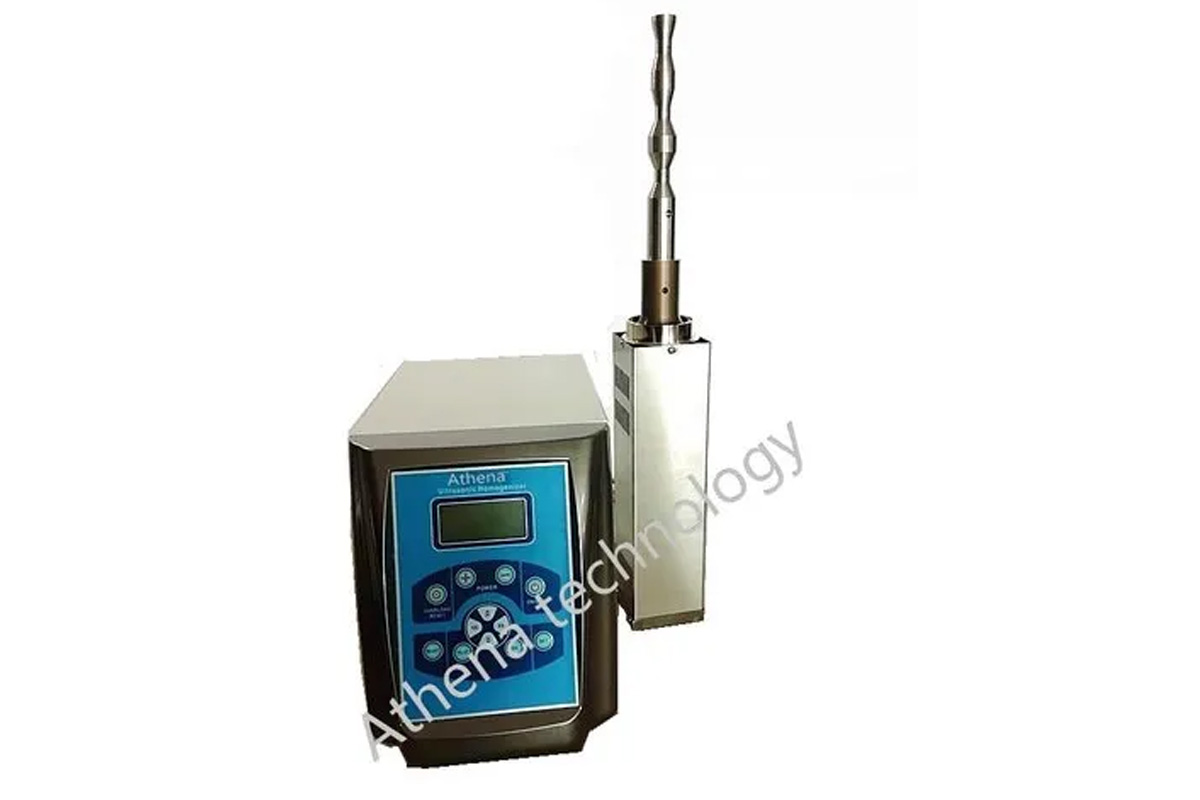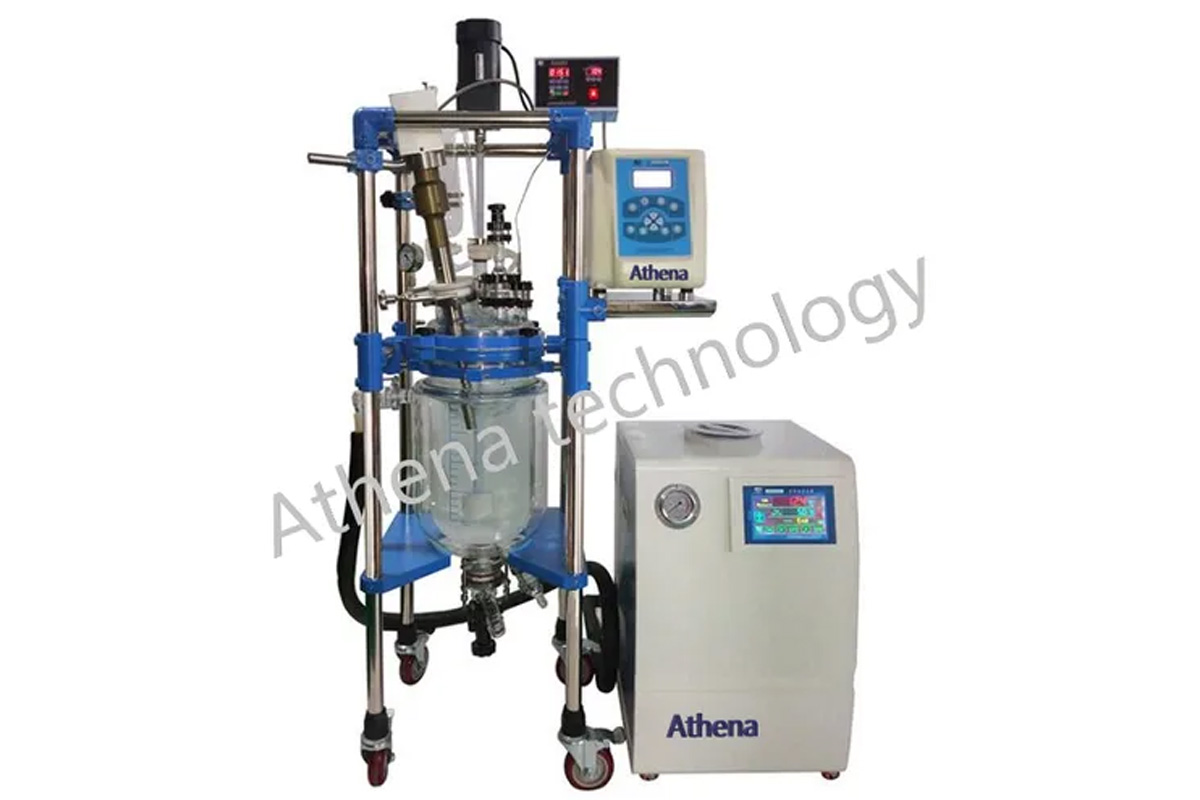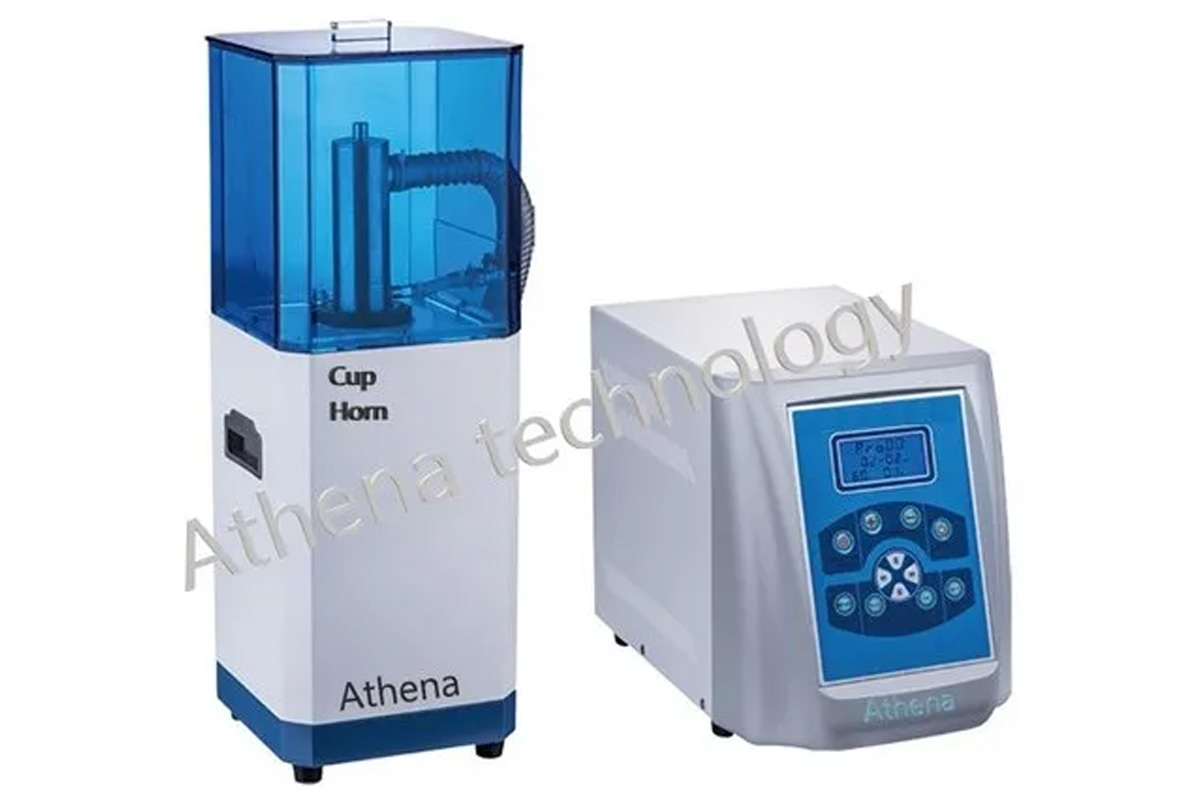Ultrasonic Extractor Reactor
Ultrasonic Extractor Reactor
Ultrasonic Extractor Reactor Ultrasonic Cavitation Reactor High Pressure Ultrasonic Homogenizer Ultrasonic Extractor
Ultrasonic Flow Cell Reactors
Product Details:
| Minimum Order Quantity | 1 Unit |
|---|---|
| Frequency (Hz) | 20 Khz |
| Capacity (litres/hour) | 0-100 |
| Power (W) | 1 |
| Voltage (V) | 230V AC Single phase |
| Material | Titanium Horn |
| Brand | Athena |
INDUSTRIAL ULTRASONIC SONO - PROCESSOR
Ultrasonic FLOW CELL REACTORS
FLOW CELL REACTORS FOR LARGER VOLUMEPROCESSINGUltrasonic Flow Cells
Ultrasonic flow-through reactorchambers are available for lab
ultrasonicators as well asfor industrial ultrasonic devices. An
ultrasonic reactorenables to sonicate the medium in a closed system
-either in flow-through mode (single pass orrecirculation) or for
enclosed sonication in a chamber.Using an ultrasonic flow-through
system, is requiredwhen higher volume streams and/ or higher
viciousmaterial is sonicated. A continuous flow through systemhas
severaladvantages over the batch-type processing
1. By ultrasonic inline processing, the processing qualityand
capacity becomes significantly higher as all materialis
fed through the chamber into the cavitation zone.This results in a
homogeneous liquid processing withhighest quality
output.2. The continuous ultrasonication results in a very
highprocessing uniformity as all the material passes
thecavitational zone in the reactor chamber.
With our micro-processor controlled ultrasonic "Sono-Processor/
Sonicator", a wide range of conventionalchemical &
physical processes can be performedefficiently such as particle size
reduction, preparation ofemulsions and dispersion,
homogenizing of liquids,atomizing, acceleration of various chemical
reactions,disruption of cells, crystallization etc.
Special Features Pre-selection of the required Amplitude (30 to
100%). This flow cell allows for 100 L per hour
sonication undermax. Pressure of 50 psi. reactor chamber
capacity250ml/500ml/1L etc.. Fully Automatic Frequency
Servo-Control. High specific Ultrasonic Power, direct interaction
betweenprocessing medium & Ultrasonic Probe. Can be
installed for Online Continuous & Batch Processes.Application Fields
Particle size reduction Homogenization
Polymerization /De-polymerization Dispersion /Suspension
Crystallization Emulsification /Mixing Degassing Atomization
Disruption of Cells Agglomeration /De-agglomeration Acceleration of
various chemical reactions, etc Viscosity Reduction
SpecificationsModel AT/1000 F Or AT/1500 FConverter / Horn PZT Lead
Zirconate,Titanium probe.Frequency 20 kHz.Cooling
jacket Water jacketed enable the sampleto be Cooled/Heaed.Standard
Probe Tip diameter 1" (25 mm). Solid
.Autoclavable.Chamber housing S.S 316, Volume of liquid
500ml.Temperature Probe Allows sample temperature to bemonitored
up to 100 DegreeC.
The propagation of ultrasonic waves is based on the medium. There is
an alternating period of positive and negative
pressure during the propagation of ultrasonic waves in the medium.
The medium is squeezed and pulled under alternating
positive and negative pressures.
When ultrasonic waves of sufficient amplitude are used to act on the
critical molecular distance at which the liquid
medium remains constant, the liquid medium breaks, forming
microbubbles, and the microbubbles further grow into air
bubbles.
On the one hand, these bubbles can be redissolved in the liquid
medium, or they may float and disappear; they may also
collapse out of the resonance phase of the ultrasonic field.
Practice has shown that there is a suitable ultrasonic
frequency for the dispersion of the suspension, the value of which
depends on the particle size of the suspended
particles.
For this reason, the ultrasonic homogenizer stops the ultrasound for
a certain period of time after a period of time,
and then continues the ultrasound to avoid heat. It is also a good
method to cool the air with air or water.

Additional Information:
- Item Code: Flowcell
- Pay Mode Terms: L/C (Letter of Credit),T/T (Bank Transfer),D/P
- Port of Dispatch: Mumbai
- Production Capacity: 5-10 monthly
- Delivery Time: 2-3 weeks
- Packaging Details: wooden box
High Volume Flow Cell for Ultrasonic Liquid Processing
Product Details:
| Minimum Order Quantity | 1 Unit |
|---|---|
| Frequency (Hz) | 20 Khz |
| Power (W) | 5000 |
| Diameter (mm) | 1 |
| Capacity (ml) | 5-20 liters |
| Temperature Range (deg. Celsius) | 100 |
| Voltage (V) | 230V AC Single phase |
| Display Type | LED |
| Controller Type | Fully Automatic microprocessor control |
| Automation Grade | Automatic |
| Brand | Athena Technology |
High Volume Flow Cell for Ultrasonic Liquid Processing
Ultrasonic Mini Flow Cell
Usually intensive ultrasound is transmitted into small volumes via a
titanium sonotrode immersed into the liquid. This
method is very efficient but has the side effect that there is also
cavitation at the sonotrode, which results in a
small contamination with fine titanium particles into the medium.
Such additions have to be avoided if a high degree of
purity is demanded as for example in the pharmaceutical industry. In
order to solve this problem Hielscher Ultrasonics
has developed in co-operation with the ETH Zurich a special flow
cell, that sonicates a medium indirectly but
nevertheless with a very high intensity. In a closed system the
medium is led contamination-free through a glass tube,
having no contact with the sonotrode or with the atmosphere. A
liquid surrounding the glass pipe supplies the right
process temperature. This method guarantees a high reproducibility.
FLOW CELL REACTORS FOR LARGER VOLUMEPROCESSINGUltrasonic Flow Cells
Ultrasonic flow-through reactorchambers are
available for lab ultrasonicators as well asfor industrial
ultrasonic devices. An ultrasonic reactorenables to sonicate
the medium in a closed system -either in flow-through mode (single
pass orrecirculation) or for enclosed sonication in a
chamber.Using an ultrasonic flow-through system, is requiredwhen
higher volume streams and/ or higher viciousmaterial is
sonicated. A continuous flow through systemhas severaladvantages
over the batch-type processing
1. By ultrasonic inline processing, the processing qualityand
capacity becomes significantly higher as all materialis fed through
the chamber into the cavitation zone.This results in a homogeneous
liquid processing withhighest quality output.2. The continuous
ultrasonication results in a very highprocessing uniformity as all
the material passes thecavitational zone in the reactor chamber.

Additional Information:
- Item Code: Flowcell1
- Pay Mode Terms: L/C (Letter of Credit),T/T (Bank Transfer),D/P
- Port of Dispatch: Mumbai
- Production Capacity: 5-10 monthly
- Delivery Time: 2-3 weeks
- Packaging Details: Wooden Box
Ultrasonic Extractor Reactor
Product Details:
| Minimum Order Quantity | 1 Unit |
|---|---|
| Usage/Application | Ultrasonic Flow Cell,Cuphorn |
| Material | SS |
| Model Name/Number | Flowcell |
| Shape | Rectangular |
| Capacity | 5-50Liters |
| Temperature Range | 5 C to RT |
| Automation Grade | Automatic |
| Frequency | 50 - 60 Hz |
| Phase | 1 |
| Installation Services | Yes |
| Brand | Athena |
Ultrasonic Extractor Reactor - Ultrasonic Cavitation Reactor
High-Pressure Ultrasonic Homogenizer
Ultrasonic homogenizer is also popular as ultrasonic emulsification
reactor, through its "cavitation effect" to realize
the emulsification of oil blended with water, emulsification of
water mixed with oil, the mixture and homogenization of
dispersed phase and continuous phase, it's modern chemical
technology to instead of propeller, colloid mill and other
traditional emulsification technology.
The high-pressure ultrasonic reactor could equip various types
chemical reactors' accessories under high temperature,
achieve reaction system gas separation and vapour phase condensation
& reflux.
So could use ultrasonic disperse, crush, and excitation etc multiple
effects to break the solvent structure of chemical
reaction material in the reactor, improve reaction activity,
disperse and crush particles, reduce its radius.
Highlights
Recent advances in ultrasound-assisted extraction (UAE) are
detailed.
Ultrasound extraction enhances extraction yield, economy and green
impacts.
Ultrasound acts directly in the plant cell to release metabolites.
Ultrasound-assisted extraction acts through single or combined
mechanisms.
An ultrasound-assisted extraction is an efficient tool for
plant-based chemistry.
Advantages
- Short extraction time
- High extraction rate
- More complete extraction
- Mild, non-thermal treatment
- Easy integration and safe operation
- No hazardous/toxic chemicals,
- No impurities
- Low cost
- Energy-efficient
- Green extraction
- Environmental-friendly.
|
Model |
AT-5SLS / |
ATS-10SLS / |
AT-20SLS / |
|---|---|---|---|
|
AT-5SLD |
AT-10SLD |
AR-20SLD |
|
|
Capacity(L) |
5 |
10 |
20 |
|
Stir Motor Power(W) |
100 |
150 |
200 |
|
Ultrasonic Frequency |
20KHz |
20KHz |
20KHz |
|
Standard Ultrasonic Probe |
¢20*1 |
¢20*2 |
¢20*3 |
|
Ultrasonic Power(w) |
50~1200 Adjustable |
100~2400 Adjustable |
200~3600 Adjustable |
|
Circulation Stirring Rate (rpm) |
0~1000 Integrated |
0~1000 Integrated |
0~1000 Integrated |
|
Digital Display, |
Digital Display, |
Digital Display, |
|
|
Controlled Temperature C (Optional) |
Atmos--200 |
28--200 |
28--300 |
|
Reactor Material |
SS304/Glass |
SS304 |
SS304 |

Additional Information:
- Item Code: Extractor
- Pay Mode Terms: L/C (Letter of Credit),T/T (Bank Transfer),D/P,D/A,Other
- Port of Dispatch: Mumbai
- Production Capacity: 10
- Delivery Time: 2-3 weeks
- Packaging Details: Wooden Box
Cup-Form Homogenizer
Product Details:
| Minimum Order Quantity | 1 Unit |
|---|---|
| Frequency (Hz) | 20 Khzs |
| Tank Capacity (l) | 5-20 liters |
| Display Type | LED |
| Automation Grade | Automatic |
| Brand | Athena |
| Material | SS |
| Ultrasonic Frequency | 20 |
Ultrasonic Extraction Reactor
Ultrasonic Cavitation Reactor High Pressure Ultrasonic Homogenizer
1.Popularused in laboratory extraction and chemistry reaction
research,to solve amplitude transformer and reactor
sealing problems.
2.This advanced practical type ultrasonic reactor could accelerate
chemical reaction.
Ultrasonic Extractor Reactor
Ultrasonic Extractor
Ultrasonic Cavitation Reactor High Pressure Ultrasonic
Homogenizer
Product Details
Ultrasonic homogenizer is also popular as ultrasonic emulsification
reactor,through its "cavitation effect" to realize theemulsification
of oil blended with water,emulsification of water mixed with oil,
the mixture and homogenization ofdispersed phase and continuous
phase, it''s modern chemical technology to instead of propeller,
colloidmill and othertraditional emulsification technology.
High pressure ultrasonic reactor could equip various types chemical
reactors'' accessories under high temperature,achieve reaction
system gas separation and vapour phase condensation & reflux.
So could use ultrasonic disperse, crush, and excitation etc multiple
effect to break the solvent structure of chemicalreaction material
in reactor, improve reaction activity, disperse and crush particles,
reduce its radius.
Highlights
Recent advances in ultrasound-assisted extraction (UAE) are detailed.Ultrasound extraction enhances extraction yield, economy and green impacts.
Ultrasound acts directly in the plant cell to release metabolites.
Ultrasound-assisted extraction acts through single or combined mechanisms.
Ultrasound-assisted extraction is an efficient tool for plant-based chemistry.
Advantages
short extraction timehigh extraction rate
more complete extraction
mild, non-thermal treatment
easy integration and safe operation
no hazardous / toxic chemicals,
no impurities
low cost
energy-efficient
green extraction environmental-friendly.

Additional Information:
- Item Code: flowcellhigh
- Pay Mode Terms: L/C (Letter of Credit),T/T (Bank Transfer),D/P
- Port of Dispatch: Mumbai
- Production Capacity:5-10 weeks
- Delivery Time:2-3 weks



